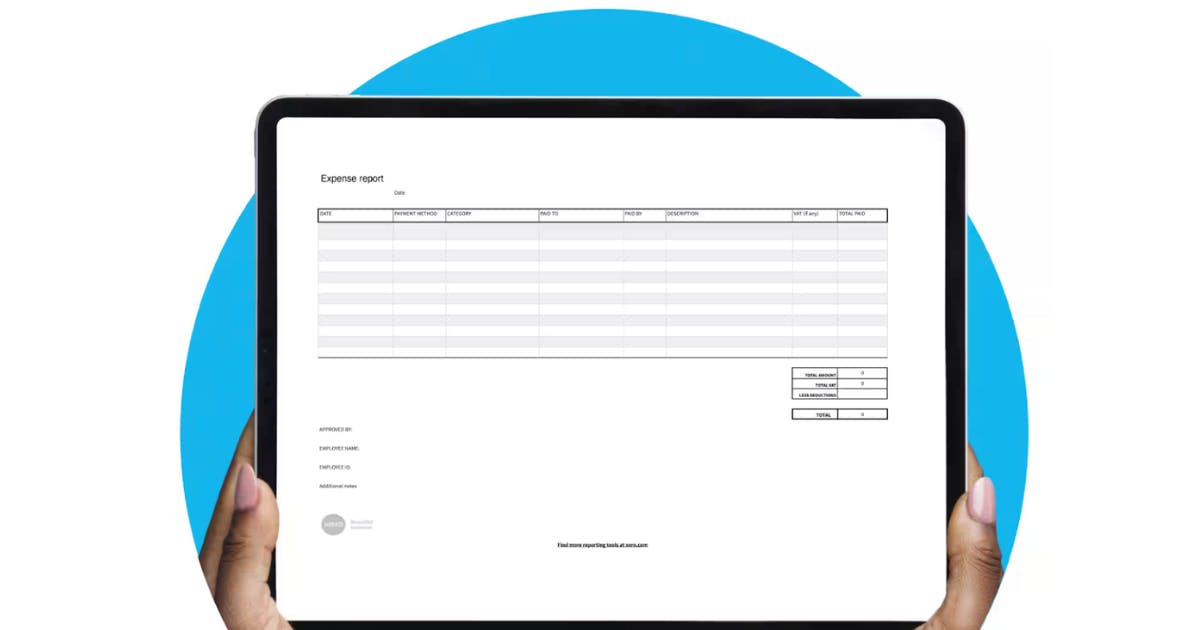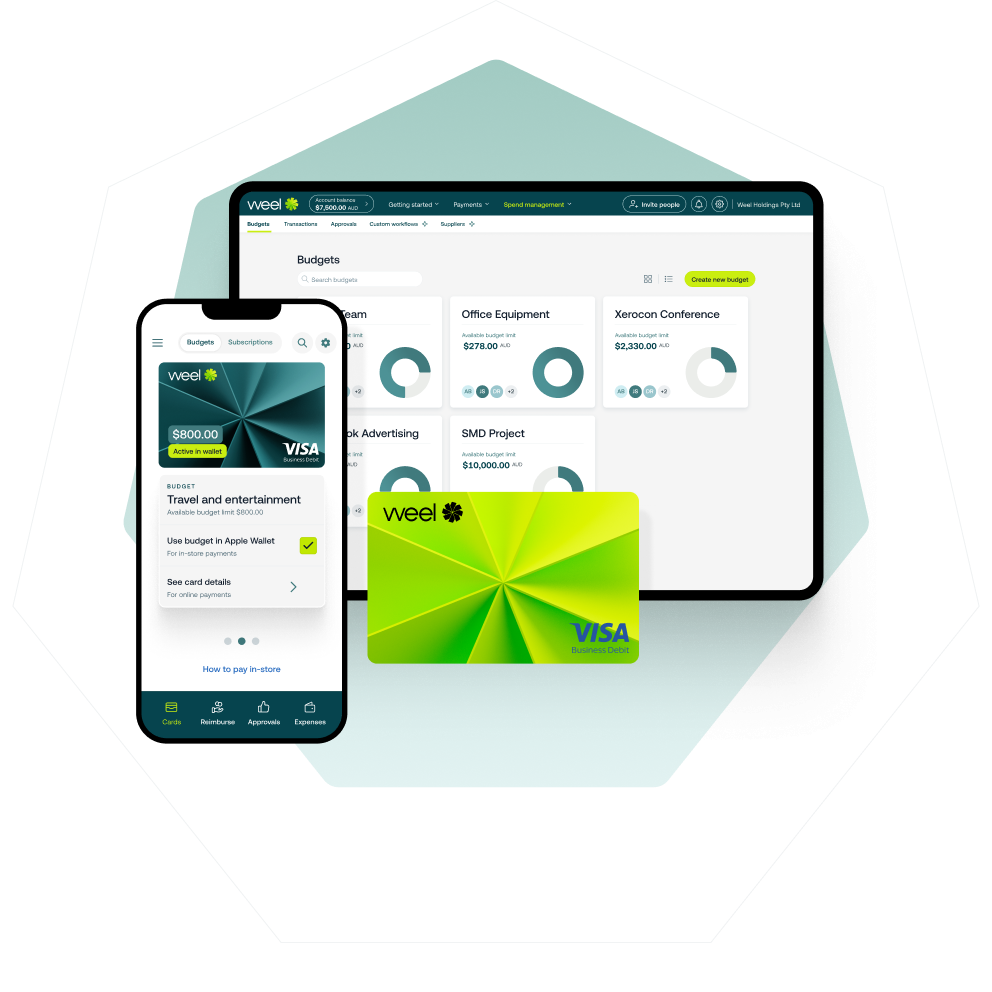In this guide, we'll explain what a reimbursement template is, show you what to include, walk through how to create one that works for your business, and share free templates you can download right away.
What is an expense reimbursement template?
An expense reimbursement template is a form that employees use to request payment for work-related expenses they've covered using their own cash. On it, you’ll find everything you need to process the payment, like expense details, amounts, and approvals.
The best templates keep things simple while getting all the information you need. This makes it easy for employees to submit expenses and for finance teams to process them quickly.
What to include on an expense reimbursement template
A good employee reimbursement sample needs these fields to make it both useful and compliant:
- Employee information: Name, department, and contact details.
- Submission date: When the form was completed.
- Expense details: Date of purchase, expense category and description.
- Amount information: Cost per item and total amount.
- Approval section: Space for approvals signatures.
- Receipt information: Info on how to attach or upload receipts.
- Missing receipt declaration: Option for when receipts aren't available.
Different businesses and teams need different things on their forms. You can create department-specific forms with relevant expense categories.
How to create an expense reimbursement template
Building an employee reimbursement template doesn't have to be complicated. Follow these steps to create a form that works for your business.
1. Choose a format
Select the format that best fits your company's workflow.
Spreadsheets like Excel or Google Sheets work well for small businesses with basic needs. PDF forms look more professional with fields that can be filled digitally. Word documents are easy to create but harder to standardise. Expense software platforms automate the entire process.
Each option has different trade-offs in terms of accessibility, ease of use, and how well it integrates with your systems.
2. Define expense categories
Create categories to help with accounting and reporting. This might include travel (taxi and Uber), meals (client lunches), office supplies, professional development, and an ‘other’ category. Consistent categories make it easier to track spending patterns and find areas where you can control costs.
3. Add policy reminders
Add expense policy information to the template. This might include submission deadlines (like "Submit within 30 days of expense"), receipt requirements, approval thresholds, and expenses that aren't covered. These reminders help stop policy issues before they happen.
4. Design the layout
When designing your template, place the most important information up top. We suggest putting your policy information on the first page and the form on the second.
Group related fields together and include clear instructions for each section. Your goal is to create a clean, easy-to-use form that guides employees through the submission process without confusion.
5. Create calculation formulas
For spreadsheet templates, include formulas that calculate subtotals by expense category, add up the total reimbursement amount, convert currencies if needed, and handle any company-specific calculations.
These automatic calculations reduce errors and save time for everyone involved.
6. Test your template
Before rolling out your new template, have a few employees test it with real expenses. Ask for feedback on how clear and easy it is to use. Verify it works properly on different devices, including desktops and mobile phones.
Free expense reimbursement sample templates for download
There’s merit to starting from scratch, but you don’t have to. Here are some ready-to-use templates you can download and customise for your business:
Weel's comprehensive reimbursement policy and form

Our top recommendation is Weel's Employee Reimbursement Policy Template, which includes:
- A complete, customisable reimbursement policy
- A professional expense submission form
- A missing receipt declaration
- Clear instructions for implementation
What makes this template excellent is that it's designed by finance professionals who understand both sides of the reimbursement process. It strikes the right balance between being thorough and keeping things simple.
Google Sheets reimbursement template

Google has a basic expense reimbursement spreadsheet that works well for very small businesses or startups. It's free and allows for basic collaboration, but lacks policy information and instruction.
SnapForms online reimbursement form

SnapForms has an online reimbursement form template that can be filled out digitally. This form can be used on any device, but you'll need a paid subscription to access full features. What it’s missing is policy information and instructions.
Xero expense report template

Xero has a downloadable PDF expense report template. It’s designed to do more than just reimbursements - tracking all expenses. It’s a blank slate, so you’ll have to come up with business and policy details from scratch.
Weel: Modern reimbursement solutions
While templates work well for some businesses, they have limitations. Manual data entry takes time, paper receipts get lost, spreadsheets don't scale well, approval chains get bogged down, and reconciliation becomes a nightmare.
That's why many growing businesses are moving to digital solutions. With platforms like Weel, your big and small spender teams can submit expenses on their phones in seconds, cutting admin time dramatically.
Digital platforms come with big advantages: receipt capture via smartphone camera, automated policy enforcement, digital approval workflows, same-day reimbursements, seamless accounting integration, and comprehensive spending reports.
Need an expense reimbursement template?
Creating an effective employee reimbursement template means designing a process that works for your entire business. For some, a simple doc or PDF-based form will do the trick. And for that, our Employee Reimbursement Policy Template is the best free, customisable, downloadable form out there.
Ready to move beyond templates and automate your entire reimbursement process? Take the product tour or book a demo with Weel today to see how our expense management platform can save your team hours of administrative work while keeping employees happy with fast, hassle-free reimbursements.










.jpeg)
.jpeg)


